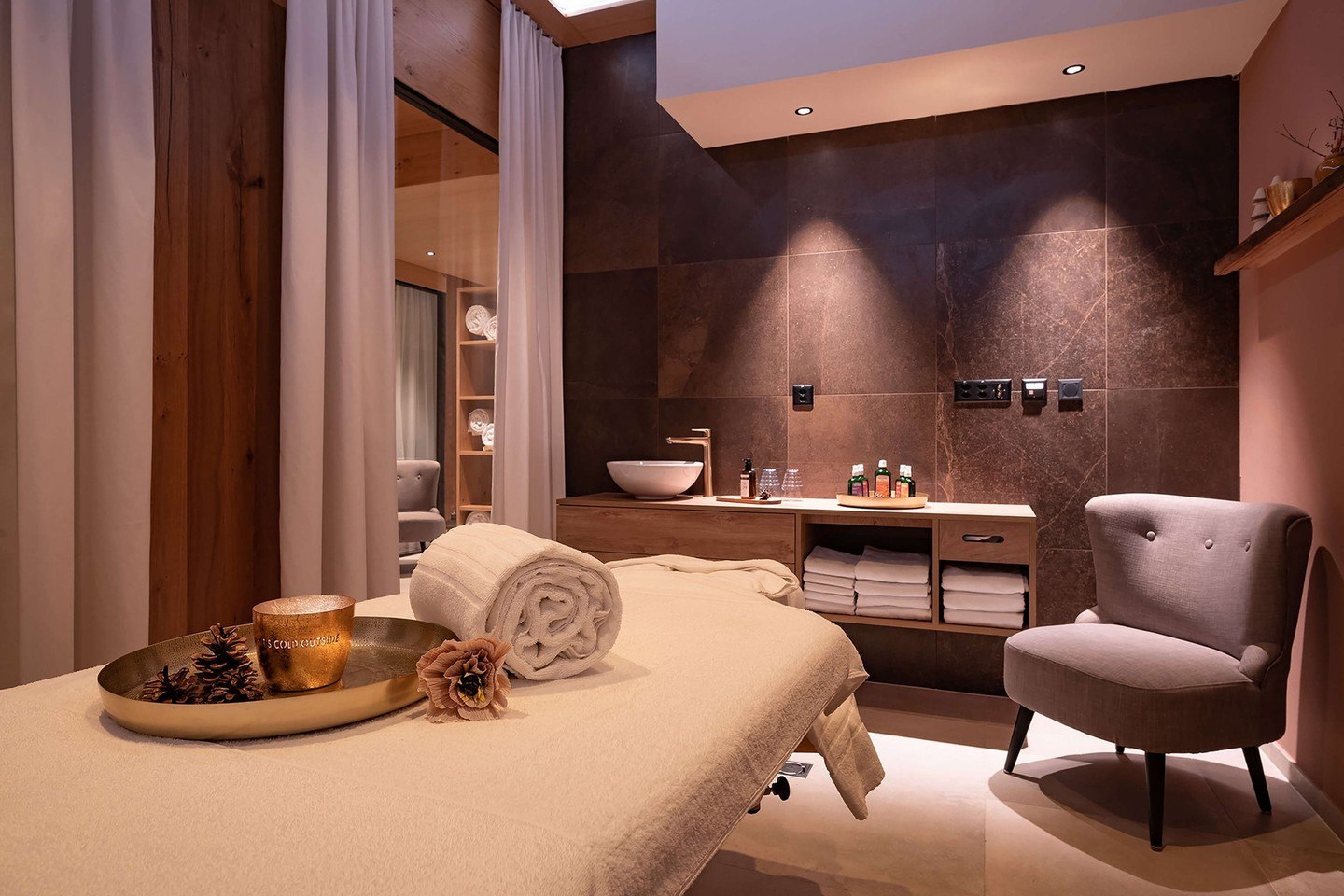Your basket is currently empty.
{{ Checkout.Stage > 1 ? 'Checkout' : 'Basket' }}
{{ item.Size !== null ? "(" + item.Size + ") " : "" }} {{ item.Price | currency:"£" }} {{ item.IncVAT ? 'inc. VAT' : 'plus VAT' }}
Thank you so much for supporting us!
We are donating {{ CharitableDonation | currency:"£" }} from your order to our good causes.

{{ CheckoutVm | json }}
Don't have an account?
{{ item.Price | currency: "£" }}
{{ item.Quantity }}
{{ (item.Price * item.Quantity) | currency: "£" }}
Thank you
A summary of your order has been sent via email.
We will let you know as soon as your order has been despatched.

12 Ideas To Create a Safe Therapy Space Oct 05, 2024
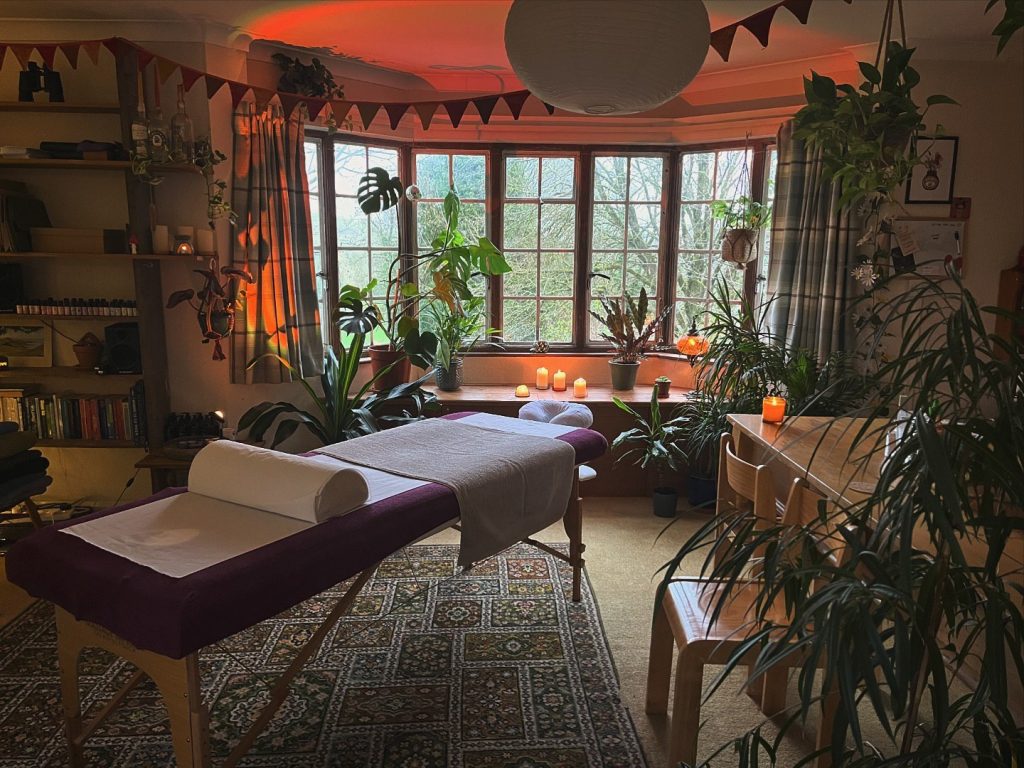
A treatment room is more than just a workspace - it's a safe haven where clients come to relax and heal. By incorporating some (or all!) of the simple touches here, like soft lighting, fresh air, and personalizing the experience - you create an environment where clients can truly let go, fostering deeper trust and a more powerful healing experience.
12 Ideas To Create a Safe Therapy Space
by Lizzie Badger, Founder of the Pro-Touch Movement
Introduction
Setting up a massage or treatment room is more than just arranging furniture - it's about crafting a space where your clients feel at ease, grounded, and ready to heal. The environment you create helps build trust and comfort, allowing clients to relax deeply and benefit more from their sessions. Here are 12 tips to help you design a space that encourages both relaxation and healing.
- Go with Natural Colours
Why it’s important: Soft, earthy tones like greens, blues, and browns help create a calm atmosphere, putting clients at ease.
For example: Try using soft beige walls with accents of sage green to create a tranquil, grounded vibe.
- Keep the Temperature Comfortable
Why it’s important: Clients can’t relax if they're too hot or cold. A well-regulated room temperature is key to comfort and relaxation.
For example: Keep the room comfortably warm, around 21-23°C (72-75°F), and have blankets on hand to keep clients feeling warm and secure.
- Ensure Windows and Doors Offer Privacy
Why it’s important: Privacy is essential for your client to feel safe and secure. When they feel protected, they can let go and fully engage in the therapy.
For example: Use frosted glass or curtains on windows, and make sure doors have a “Do Not Disturb” sign for total peace of mind, helping clients feel their confidentiality is respected.
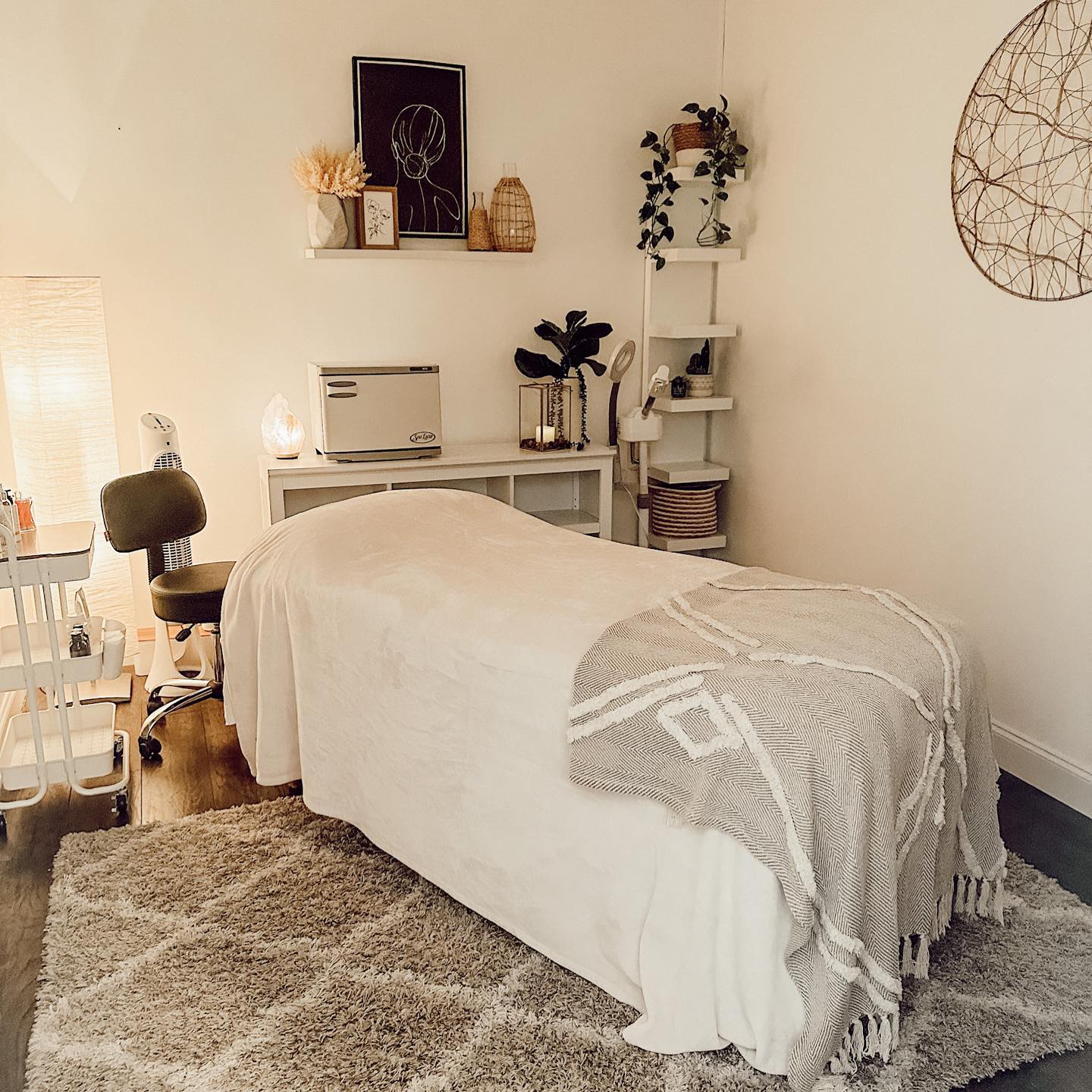
- Play Soft, Calming Music
Why it’s important: Relaxing music not only helps block out external noises but can allow your clients to focus on the experience, deepening their state of relaxation. However, always check with your client, especially if new, as they may not want music or would like the volume adjusting.
For example: Play gentle instrumental tracks or nature sounds at a low volume to create a soothing backdrop that promotes a calm mindset. Music with a frequency of 396 Hz is suggested to aid with the balancing of the root chakra, Muladhara.
- Incorporate Aromatherapy
Why it’s important: Scent is a powerful tool for relaxation. The right aroma can ease tension and help clients feel more connected to the moment.
For example: Diffuse essential oils that balance the root chakra, Muladhara, (e.g. patchouli or amber), or offer a few options for clients to choose from to personalize their experience.
- Use Soft Lighting or Candles
Why it’s important: Harsh lighting can feel clinical, whereas soft, warm lighting invites relaxation and creates a more intimate, safe space.
For example: Use dimmable lights or flameless candles to create a gentle glow that encourages clients to relax both physically and mentally.
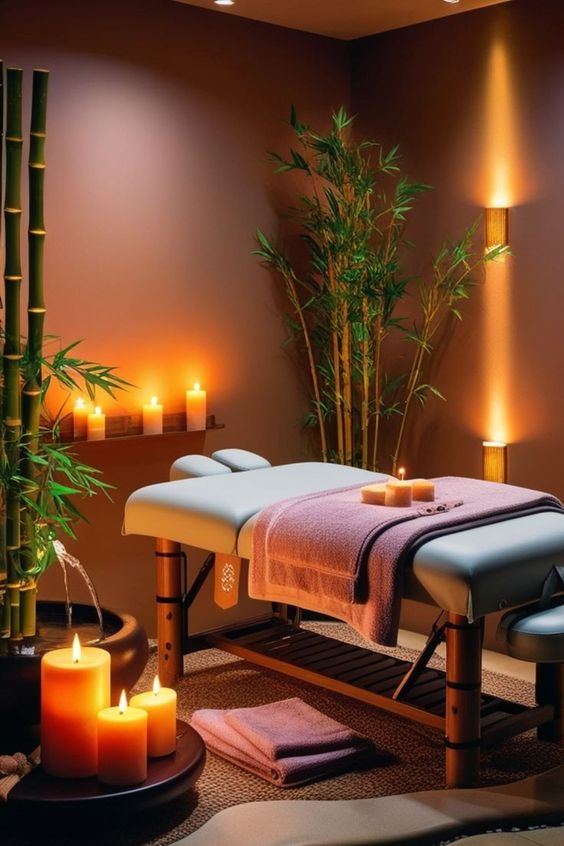
- Keep the Air Fresh and Well Ventilated
Why it’s important: Stale air can be uncomfortable and distracting. Fresh air helps the room feel more open, clean, and inviting, encouraging a more relaxed mindset.
For example: Open windows if possible, or use an air purifier to keep the space well-ventilated and smelling fresh, especially between clients.
- Invest in a Supportive Treatment Table and Soft, Warm Linens
Why it’s important: A supportive, comfortable massage table helps clients fully relax into the session. If you can afford the investment, heated couches are an amazing luxury and really help the client experience. Soft, high-quality linens make the experience even more pleasant – again, especially if you can warm them first.
For example: Choose a sturdy, well-cushioned table, and use fresh, soft linens for every session to give clients a sense of care and cleanliness.
- Keep the Space Uncluttered
Why it’s important: A clutter-free environment allows clients to clear their minds as well, promoting a sense of calm. Too much visual distraction can prevent them from fully unwinding.
For example: Store equipment and supplies out of sight, and keep only the essentials on display to maintain a peaceful, organized space.
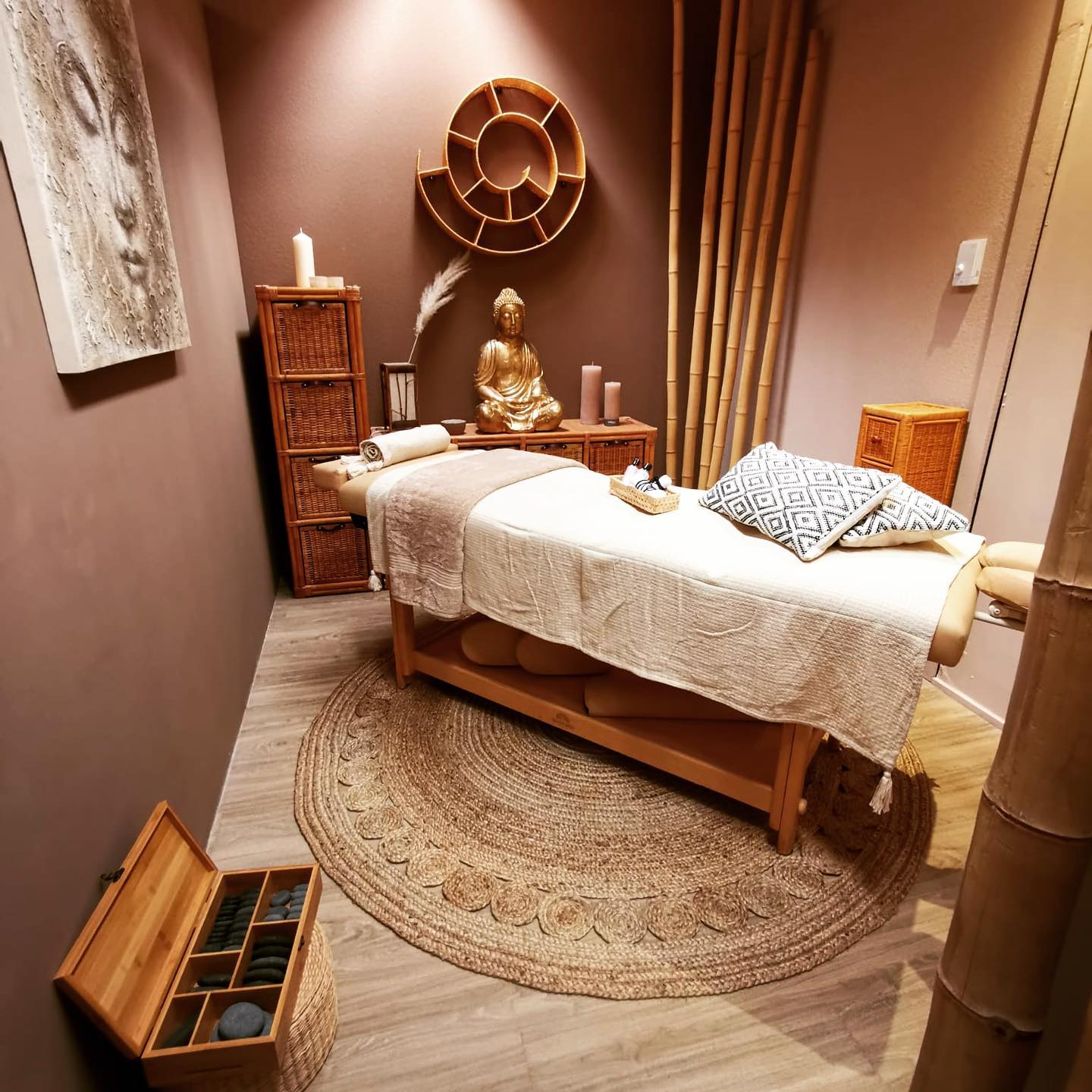
- Use Gentle, Welcoming Textures
Why it’s important: Soft textures can help clients feel more comfortable and relaxed, making them feel safe and nurtured.
For example: Include soft rugs, throws, or cushions in the room for a warm, inviting touch that complements the therapeutic atmosphere.
- Bring in Plants for a Natural Touch
Why it’s important: Plants improve air quality and add a sense of calm, helping clients feel more connected to nature and at ease.
For example: Place a few easy-care plants like succulents or ferns around the room to create a serene, natural atmosphere. If there is no natural light in your treatment room, then artificial plants can create a similar tranquil haven.
- Regularly Check Your Equipment
Why it’s important: Squeaky or uncomfortable equipment can detract from the experience and prevent clients from fully relaxing. Reliable, well-maintained tools build trust in your professionalism.
For example: Routinely inspect your massage table, linens, and pillows to ensure they are clean, functional, and comfortable.
Conclusion
A treatment room is more than just a workspace - it's a safe haven where clients come to relax and heal. By incorporating some (or all!) of the simple touches above, like soft lighting, fresh air, and personalizing the experience - you create an environment where clients can truly let go, fostering deeper trust and a more powerful healing experience.
